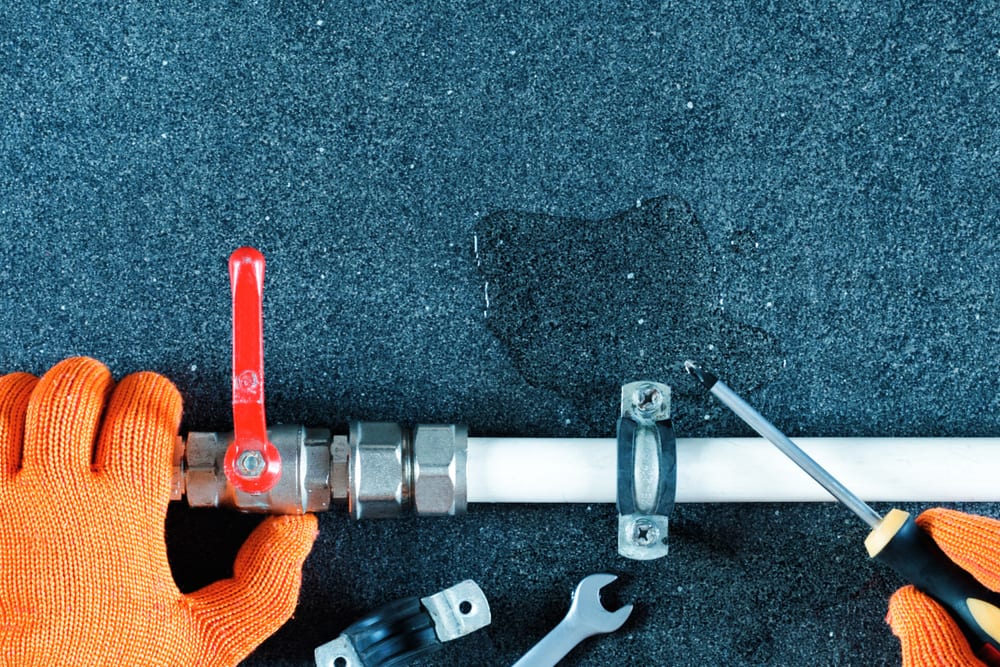How to Discover as well as Fixing Water Leaks-- A Comprehensive Guide
DetailThe article listed below involving Leaking water lines is incredibly attention-grabbing. You should see for yourself.

Early detection of dripping water lines can minimize a possible disaster. Some little water leaks may not be noticeable.
1. Check Out the Water Meter
Every home has a water meter. Inspecting it is a guaranteed manner in which assists you discover leakages. For starters, switch off all the water sources. Make certain no person will certainly purge, utilize the faucet, shower, run the cleaning device or dishwashing machine. From there, go to the meter and watch if it will certainly alter. Considering that no person is using it, there must be no motions. That indicates a fast-moving leak if it relocates. If you spot no adjustments, wait an hour or two as well as inspect back again. This indicates you may have a slow leakage that could even be underground.
2. Check Water Usage
If you detect sudden changes, despite your consumption being the same, it means that you have leakages in your plumbing system. An unexpected spike in your bill shows a fast-moving leak.
A constant rise every month, even with the very same behaviors, shows you have a slow-moving leakage that's likewise slowly escalating. Call a plumber to completely inspect your residential property, especially if you feel a warm location on your flooring with piping beneath.
3. Do a Food Coloring Examination
When it comes to water consumption, 30% comes from bathrooms. If the shade somehow infiltrates your dish throughout that time without flushing, there's a leakage in between the tank and bowl.
4. Asses Outside Lines
Don't forget to inspect your outdoor water lines also. Needs to water leak out of the connection, you have a loosened rubber gasket. One tiny leakage can lose heaps of water and surge your water expense.
5. Evaluate the circumstance and check
House owners need to make it a habit to examine under the sink counters and also also inside closets for any type of bad odor or mold development. These two warnings suggest a leakage so punctual attention is called for. Doing regular evaluations, even bi-annually, can save you from a major problem.
Check for discolorations as well as compromising as many appliances as well as pipelines have a life expectations. If you think dripping water lines in your plumbing system, do not wait for it to intensify.
Early discovery of leaking water lines can alleviate a prospective catastrophe. Some small water leaks might not be noticeable. Inspecting it is a guaranteed means that aids you find leaks. One tiny leakage can lose heaps of water and also surge your water costs.
If you believe dripping water lines in your plumbing system, don't wait for it to escalate.
How to Know If Your Home Has a Hidden Leak
Water Meter Reveals Inexplicable Water Usage
If you’d like to test whether or not there’s a leak somewhere in your home, you can do this using your water meter. Here is how to conduct the test:
Don’t use any water in your home for at least 30 minutes; this also means not turning on faucets or water-using appliances.
Go outside, and check your water meter for activity.
If your water meter shows that there was activity, even though no one was using any water, this proves that there is a leak in your home.Visible Mold or Mildew Growth
Leaks behind walls create moist, dark environments that allow mold and mildew to grow and thrive. Eventually, you might see mold growth forming on the wall closest to a hidden leak.
If mold is growing in an area that receives a high amount of moisture, such as a bathroom, it may simply be an indication that better ventilation is needed. However, if you see mold growth on a wall or the ceiling in an area where you would not expect, you probably have a hidden leak.
Musty, Mildew Odor
Sometimes you might not be able to see the mold or mildew that is growing as a result of a leak. However, the smell can give the problem away just as easily. If you catch a whiff of something musty, there’s a good chance that old water is collecting somewhere in your home that you can’t see.
Stained/Warped Walls, Ceilings, or Floors
When your home soaks up water, a variety of red flags can become visible, including ceiling stains, bubbling drywall, warped walls, and sagging floors. While these issues can be caused by excess humidity, they can also be signs that a pipe or plumbing connection has started leaking behind your walls.
Inexplicably High Water Bill
After a while, you get a general sense for what your water bill should be. If you own a pool or sprinkler system, your bill will tend to be higher during summer. However, if you receive a water bill that seems especially high, and you can’t figure out what caused it, then you may have a hidden leak somewhere that’s increasing your bill.
https://www.plumbingjoint.com/blog/2019/july/how-to-know-if-your-home-has-a-hidden-leak/

I ran across that piece of writing on Detecting hidden plumbing leaks when browsing the internet. Sharing is nice. You won't know, you may very well be helping someone out. I cherish reading our article about Detecting hidden plumbing leaks.